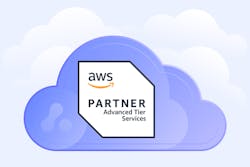Helping a non-profit music and video gaming festival migrate to AWS native capabilities
Discover how Adaptavist helped MAGFest migrate its IT infrastructure and containerise a monolithic application with AWS.

Requirements for migrating and containerising with AWS
- Containerise a monolithic application to be AWS native.
- Migrate infrastructure from DigitalOcean to use AWS native capabilities.
- Transfer ongoing management of the infrastructure to AWS Managed Services.
- Establish appropriate cloud security best practices.
buildings Icon Industry: Arts and culturehigh_five Icon Number of employees: 7, and 1,000 volunteersaccident Icon Average number of festival attendees: 25,000
Results at a glance
scale Icon Ability to scale up to meet sudden demand when festival tickets go on sale, and scale back during periods of low activity.
accident Icon Developer-friendly software that’s more accessible and universally used.
graph Icon Increased developer productivity and efficiency, and a faster turnaround on changes.
devops Icon Ability to push back new changes more frequently, so our client can dynamically update their systems.
rocket Icon Easy to onboard new employees and volunteers who want to work on our client’s open-source project.
support Icon Ongoing infrastructure management through managed services.
About the customer
Our client is a non-profit organisation with three main events a year: MAGFest, MAGStock, and MAGWest. MAGFest (Music and Gaming Festival) is the organisation’s flagship event, attracting an average of 25,000 festival goers. Taking place once a year, the four-day festival runs 24 hours a day and is a celebration of video game music, gaming of all types, and the gaming community. With no corporate sponsors, this grassroots event is driven by volunteers; run by the people, for the people.
Customer challenge
The main issue our client faced was a lack of resources. The core of our client’s operations is a small team of seven employees, with one primary employee managing the development side of the business. This employee was overloaded with responsibilities to keep the operation afloat, and they didn’t have time to look for and embrace new features. Additionally, our client’s developer didn’t have time to embrace DevOps principles or focus on the issue of scalability.
As our client is a music and gaming festival, they experience a sudden acceleration of online activity in September when tickets are released. Ticket prices are structured in a way where the cheapest tickets are released first, followed by more expensive ones. The system must cater to sudden demand when customers rush to buy the less expensive tickets, and then return to low-level use for the rest of the year. If our client can’t cater to demand, they risk facing frustrated customers and a PR issue. But the existing application was not straightforward to scale. It caused significant cost overruns during peak usage times and could not handle requests when load was underestimated.
Our client was using DigitalOcean for their Virtual Machine (VM)-based application, although the container solutions weren’t suitable, and they didn’t want the operational overhead of running and maintaining Kubernetes. Similarly, the support for managed services for Redis, PostgreSQL, and RabbitMQ was insufficient. Every instance of the application was running on its own VM and was not containerised, leading to hotfixes being lost or untracked in source control.


Adaptavist is an AWS Advanced Consulting Partner
Whether you’re just starting out and want migration support or need expert advice leveraging AWS to meet your growth strategy and business goals, we’re here to help.
Our solution
As part of the AdaptaKind effort (Adaptavist’s give back program for charity), Adaptavist’s professional services team members helped with the project. Our client’s employees, coding contractor, and a team of volunteers joined in implementing the solution, which was split into two stages.
Our client was using Salt, a configuration management and orchestration tool, to deal with application deployment, scaling, automation and anything related, so the process involved moving it to be containerised and more cloud-focused.
The first phase of the transformation was to establish our client’s major pain points and move the services that were easier to switch from DigitalOcean to AWS. This included moving the client’s database server into AWS RDS, AWS ElastiCache for their Redis server, and AWS SES for sending emails.
The second phase of the transformation was to move the client’s old systems. Our client needs to access historical data, so we moved their legacy event servers into AWS as part of this migration. We migrated the data into systems and used containers running inside AWS ECS as a test bed environment to work out some of the issues in a trial-and-error process. During the process, we faced challenges replicating the load from scaling events. We worked out how to predict these loads and pre-scale the system to handle the load.

AWS services used in the solution
suitcase Icon AWS ECS (Elastic Container Service)
suitcase Icon AWS EFS (Elastic File System)
suitcase Icon AWS ElastiCache
suitcase Icon AWS RDS (Relational Database Service)
suitcase Icon AWS SES (Simple Email Service)
suitcase Icon AWS CloudWatch
The results
Importantly, our client has seen a 50% cost reduction due to the transformation work. It breathed new life into the project and made it viable to continue running.
Aside from important cost savings, the work has reduced developer load. As a result, our client has seen improved developer productivity and efficiency and faster turnaround on changes. Previously, someone couldn't use the system unless they had experience. Now, you don’t need to be an expert—you can create a developer environment without prior knowledge of the system. The software is more developer-friendly and more accessible, so it’s easier to onboard new people who are interested in helping on the client’s open-source project. Generally, people involved in the project are more excited to contribute.
Another key improvement is the ability to push back new changes more frequently. Now that our client’s applications are containerised, it’s easy to set up a new container and swap it with the old version when a change does happen. It means our client can update their systems more dynamically, with less stress on their developer.
About Adaptavist
Adaptavist is a global technology and innovative solutions provider, helping organisations boost agility and overcome the challenges of digital transformation. As an AWS Advanced Tier Consulting Partner, we’re the perfect choice to deploy, run, and manage every aspect of your cloud experience. Whether you’re just starting and want migration support or need expert advice leveraging AWS to meet growth strategies and business goals, we’re here to help.